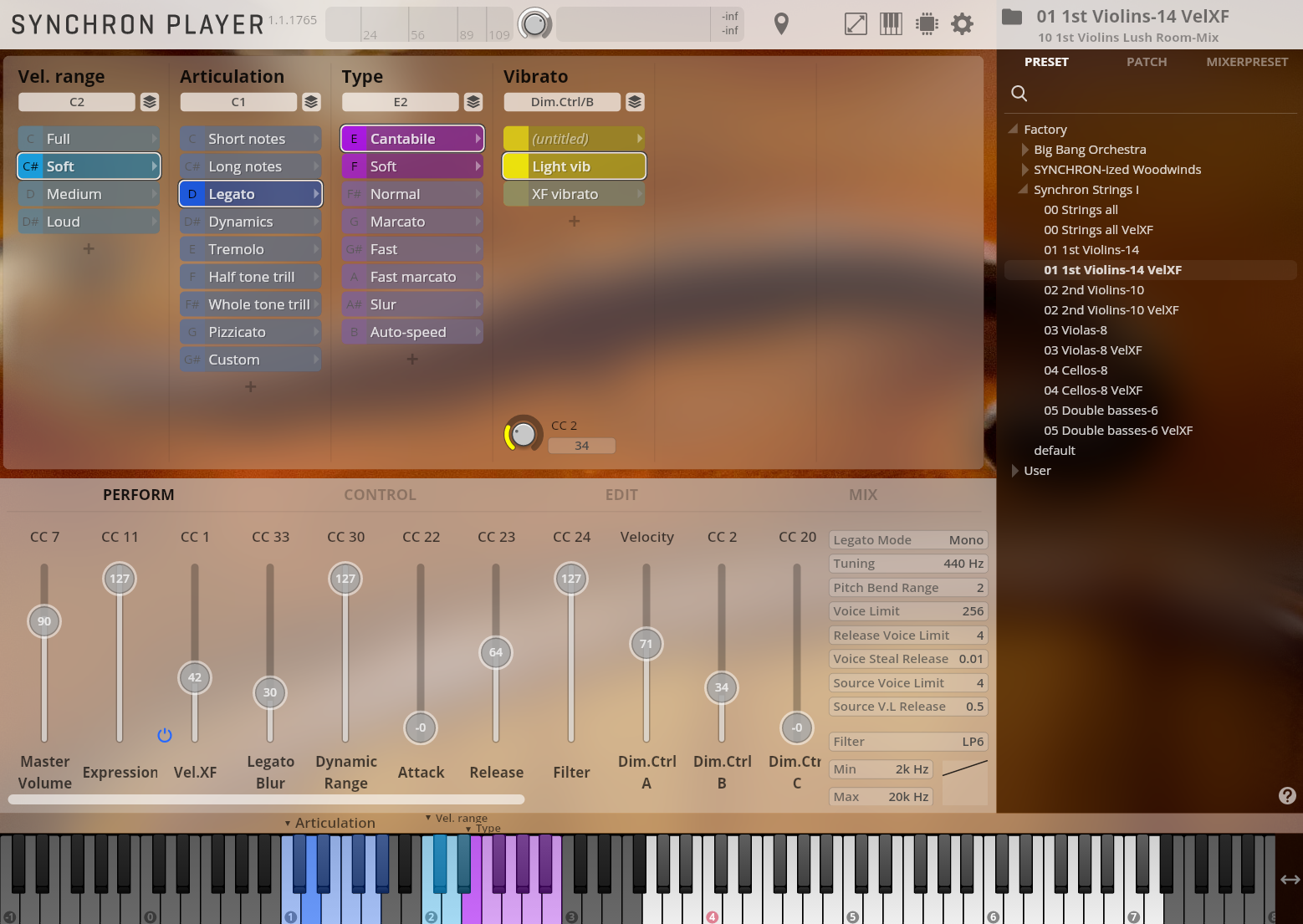 Hello Composers, Mike here! =)
Hello Composers, Mike here! =)
And today I want to share my favorite things about a new string library I tried out called “VSL Synchron Strings 1”.
It is a big orchestral strings sample library, with huge potential and lots of versatility. Watch my video review here. Here are my favorite top aspects about Synchron Strings 1:
1. Very Balanced Sound
This library was recorded at Synchron Stage Vienna, and seating position. And since all VSL Synchron libraries have been recorded the same way, you get a superb balance in all ways: levels, stereo field, depth of stage etc.
Also, the dynamic range is natural and balanced between articulations. Meaning, the pizzicatos at full dynamics will never be louder than for example a bold marcato. This is the natural way dynamics work, the way you achieve a balanced and authentic sound stage.
2. Lots of Dynamic Layers
They recorded a lot of dynamic layers for all articulations, often around 8 different velocity layers and 10 variations. This minimizes the cross-fades otherwise needed between dynamics, and reduces the “machine gun effect” on short note rhythms.
Basically, more dynamic layers and round-robin variations = more authentic sound.
3. The Mixer Presets
The mixer page gives you incredible deep sound design options to really sculpt the tone and ambience of your performances. And it comes with a lot of mixer presets that you can switch between instantly.
You can go from close and dry, to wide and roomy, to ambient and distant, all the way to processed sound design presets. Want to give your violins a lush wide stage sound, but keep your cellos more in front? Easy as switching mixer presets.
4. The Amount of Articulations
This is the string library with the most versatility in articulations I have ever tried. Lots of variations on legato is my favorite aspects, as legato is so important for string parts.
But it goes deeper than that. You also dynamic focused articulations like crescendo, diminuendo, strong attack notes with sforzato. And of course trills, tremolos, harmonics, flautando etc.
5. The Flexible User Interface
You can scale the entire GUI as you wish. But more importantly, you can do so much with custom mappings on CCs, key switches, even pitch bend.
You choose, how you want to perform and control the performances you record with Synchron Strings. It is also super easy. Just click and choose per “fader” = parameter.
For example, don’t want to use CC2 for dynamics. I prefer CC1 myself. Map vibrato X-fade? I mapped it to CC2. Shape legato blur, attack or any other of the countless of parameters? Choose how and what you want to map it to, and then record it with a MIDI fader, or just write in the automation in your DAW if you prefer.
My Final Thoughts
Yes, this is a huge string library. You need lots of drive space, but there is a reason for that. It includes an incredible amount of articulations, dynamic layers, variations etc.
This is not a niche string library, it is a fundamental all-in-one string library, recorded with great care to tone and balance in a very good sounding scoring stage.
Is this a string library for you? I will leave that up to you, but if you want to learn more: Click here to get specifications and more information.
